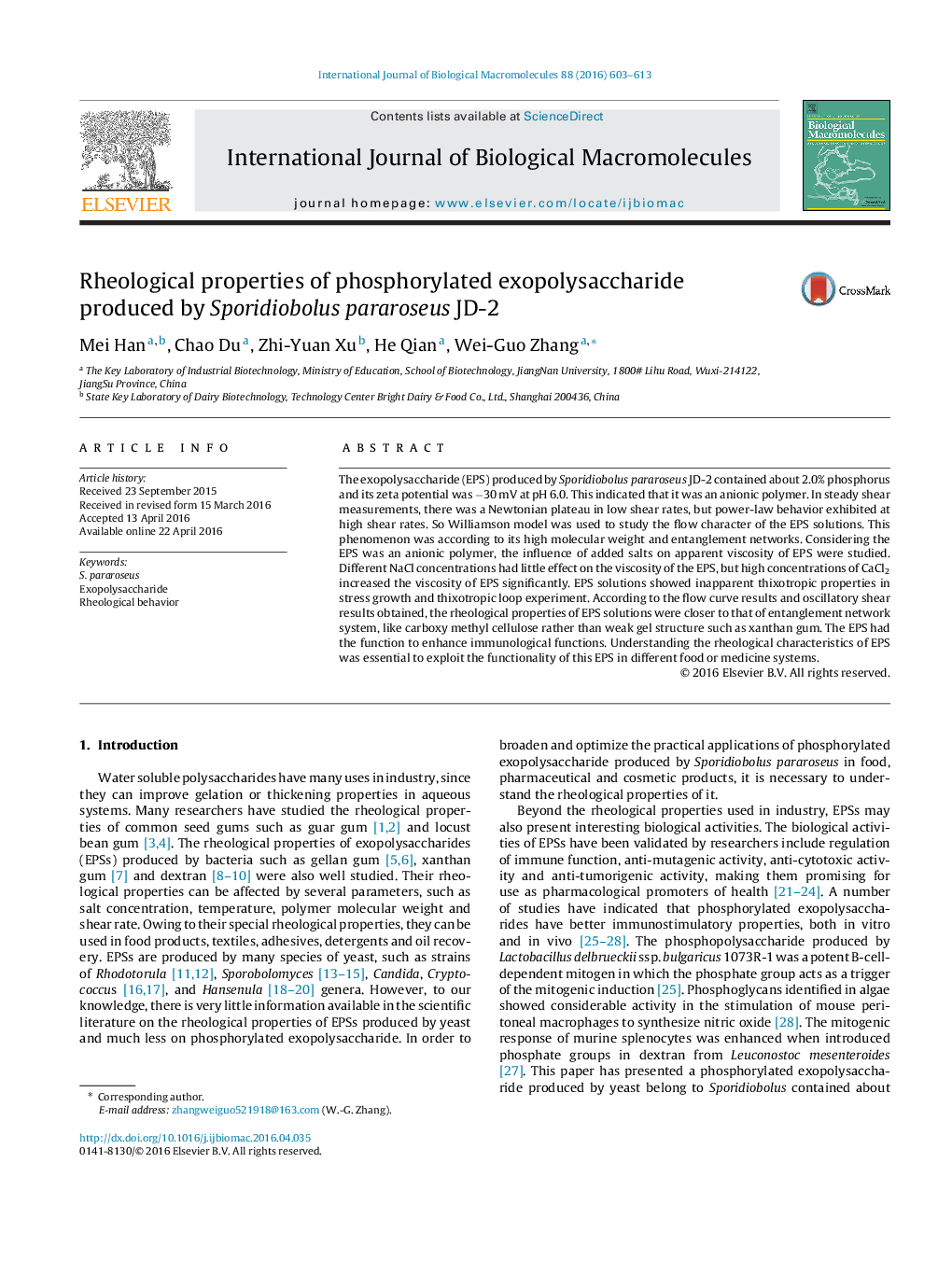| Article ID | Journal | Published Year | Pages | File Type |
|---|---|---|---|---|
| 1986160 | International Journal of Biological Macromolecules | 2016 | 11 Pages |
The exopolysaccharide (EPS) produced by Sporidiobolus pararoseus JD-2 contained about 2.0% phosphorus and its zeta potential was −30 mV at pH 6.0. This indicated that it was an anionic polymer. In steady shear measurements, there was a Newtonian plateau in low shear rates, but power-law behavior exhibited at high shear rates. So Williamson model was used to study the flow character of the EPS solutions. This phenomenon was according to its high molecular weight and entanglement networks. Considering the EPS was an anionic polymer, the influence of added salts on apparent viscosity of EPS were studied. Different NaCl concentrations had little effect on the viscosity of the EPS, but high concentrations of CaCl2 increased the viscosity of EPS significantly. EPS solutions showed inapparent thixotropic properties in stress growth and thixotropic loop experiment. According to the flow curve results and oscillatory shear results obtained, the rheological properties of EPS solutions were closer to that of entanglement network system, like carboxy methyl cellulose rather than weak gel structure such as xanthan gum. The EPS had the function to enhance immunological functions. Understanding the rheological characteristics of EPS was essential to exploit the functionality of this EPS in different food or medicine systems.
